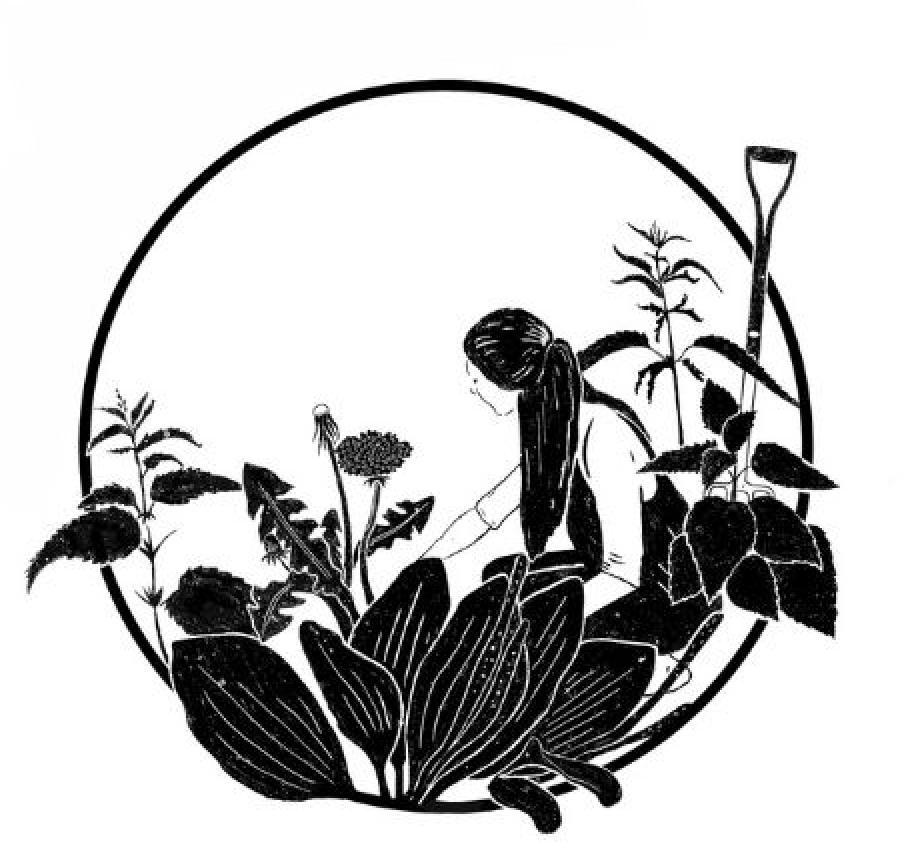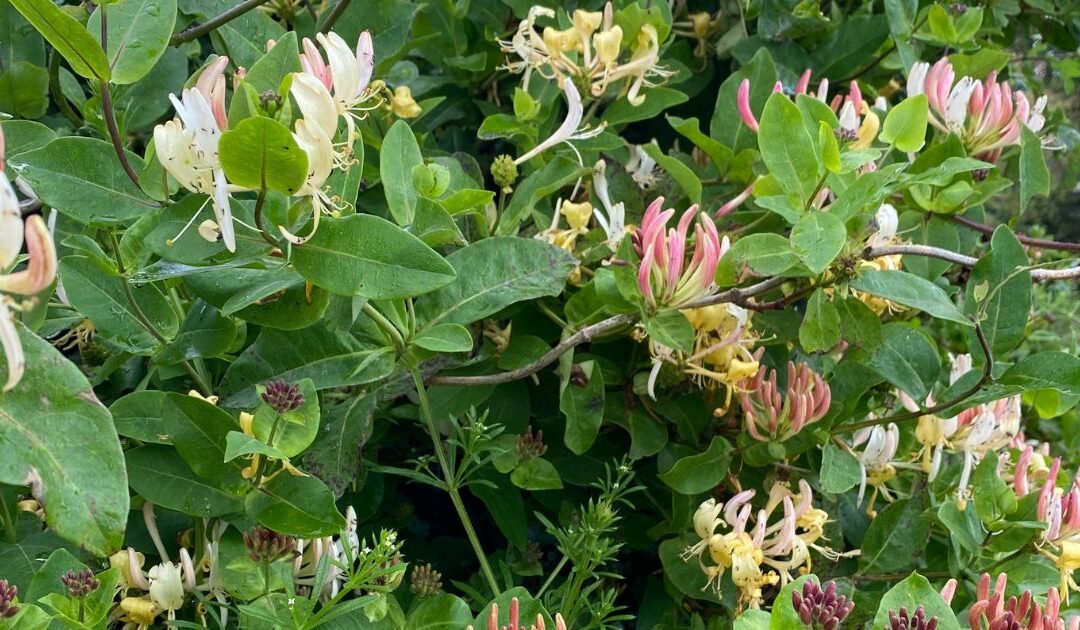Of all the plants growing in July the two I am enjoying the most are the elderflower which sadly are beginning to fade and shed their tiny petals, and the opulently scented honeysuckle. Both of these flowers are quite dominating with their scent. They are not blossoms you can ignore and they are both fascinating to work with from a folk herbalist stance.
While I’ve talked about elder before here on the podcast and you should be able to find a whole episode of my podcast dedicated to it I haven’t discussed honeysuckle as much. And I want to share some facts and recipes on this divine blossom.
There are many reasons that I’m grateful for honeysuckle. First of all it replaces the need to grow the headily scented jasmine, which my coastal location doesn’t favour and secondly it grows in the wild, usually threaded into hedgerows alongside the dog rose. Honeysuckle, with its art nouvaux-esqe trumpet shaped flowers is an edible flower, and as a child, despite not actually asking my parents if it was safe to do so, I would nip the end of the flowers off and suck out the sugar nectar. I suppose this is why the plant is called honeysuckle! This was a favourite thing of mine to do on long dusty walks around the countryside. I would lag behind and hunt out the scented honeysuckle for a fragrant sugar hit, and if I was lucky I’d also spy some little bilberries to snack on too!
Honeysuckle remains a symbol of an era to me, a time lost in the fairyland of wild Wicklow on the hottest days of the summer holidays.
Honeysuckle may not be as popular a herb as let’s say lavender, but it does have medicinal uses. The flowers can be used in remedy making but it is important to know that the berries, although an attractive red, are poisonous so leave those for the birds. Honeysuckle has been used as a remedy for strengthening the lungs for many years. The 17th century herbalist Nicolas Culpepper wrote that he “Knows no better cure for asthma” although personally I wouldn’t test that one out and of course always consult a doctor regarding medical conditions and herbal use.
Honeysuckle is a cooling and drying herb and it is said to contain salicylic acid. It has expectorant qualities and is a good antiseptic. Honeysuckle a herb I would reach for in helping ease a chesty cough or to help reduce a build up of phlegm. The best way of doing this would be to make a honeysuckle syrup with the flowers. You could take this by the spoon or add it into a glass of water. And if you don’t want to use it as a remedy it will very delicious in a cordial or added into rich puddings.
Recipe for Honeysuckle Cough Syrup:
1 cup of fresh honeysuckle blossoms.
1.5 cups of water
1 cup of honey
Pour 1.5 cups of freshly boiled water over 1 cup of honeysuckle flowers in a heatproof bowl. Cover and let infuse for 4 hours.
Once the infusion time is complete, strain the liquid into a jug to remove the herbs. Keep the liquid and discard the herbs onto the compost.
Now stir in the honey until it is fully incorporated.
Pour into a clean, dry jar or bottle, seal with the lid and label. Store in the fridge and use within 4 weeks.

